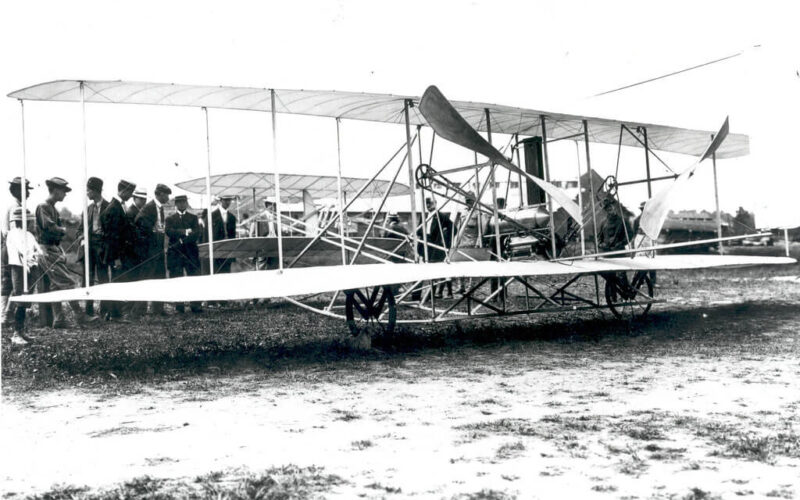Being a pilot is a fascinating calling, deservedly admired by all. A bit more neglected but just as important is the merit of engineers and aviation technicians who make planes fly and keep the industry going. Today, on May 24, AeroTime Hub celebrates the genius of people who work behind the scenes of aviation.
From fixing bicycles to levitating the first aircraft
The holiday originates from the legacy of Charles Edward Taylor – an American engineer who created the engine for the world’s first plane. A pioneer of design and maintenance of the original aircraft engines, interestingly enough, found himself in the industry by a fluke.
Born on May 24, 1868, in a small city of Illinois, the U.S., Charles Edward Taylor was a toolmaker specializing in farm machinery and bicycles. The Wright Brothers, who in the 1890s owned a bicycle company, hired him as a mechanical engineer and repair specialist. As the company’s scope started to expand to the aeronautical segment, Taylor was compelled to switch specialty too.
To create their first flyer, the Wright Brothers needed an off-the-shelf engine with at least 8 horsepower, which was not available in the U.S. at the time. The brothers decided not to look for international providers of engines. Instead, they asked Tailor to build one. What Taylor managed to do was unthinkable – based on the rough sketches of the Wright Brothers, he designed and built an entire engine prototype in just six weeks. The aircraft engine was of 12 horsepower.
.jpg)
Charles Taylor and Wilbur Wright attach a canoe on a new Flyer, 1909
Prophesying potential danger of airplanes or fearing Taylor might leave for a career as an exhibition pilot, the Wright Brothers refused to teach Taylor to fly despite his want. So, he went on maintaining planes. During one of the demonstration flights, there was an accident. The plane jolted and hit the ground, killing one of two people on board. It was Taylor who scrutinized the case, becoming the first person ever to investigate the fatal plane crash. It was also him who found out that the delamination of the freshly installed propellers had led to the accident.
With his contribution largely forgotten until 1937, this leading mechanic in the Wright Brothers’ shadow was essentially the person who made the flight possible.
Ahead of his time with delta wing, VTOL and rocket-powered fighters
A true engineering maverick, Alexander Martin Lippisch’s work provided a basis for delta wing – an aircraft configuration that proved to be effective for both supersonic jets and fighters.
Alexander Lippisch was born in Munich, Bavaria, in 1894. Enforced to abandon his dreams about art school because of the First World War, Lippisch snatched his bit of creativity while serving in the German Army where he learned aerial photography.
After the war, Lippisch worked for the renowned Zeppelin company. This is where his interest in engineering with particular attention to tailless aircraft emerged. In 1921, Lippisch’s first aircraft design saw the light: Espenlaub E-2 glider. The project would result in dozens of plane designs he made through the 1920-1930s. His tailless aircraft, gliders Storch I – Storch IX, swiftly caught the interest of private companies and the government.

Alexander Martin Lippisch and his tailless aircraft Storch V, 1932
Pioneering aerodynamics and bizarre plane designs, Lippisch was also working with VTOL unmanned aircraft concept before it had become mainstream. The Dornier Aerodyne was his vision of a wingless vertical take-off and landing aircraft. Despite successful flight tests in 1972, the development was not over due to a lack of interest from the German Air Force.
Lippisch made an enormous contribution in understanding tailless aircraft, delta wings and the ground effect. During his work, Alexander Martin Lippisch offered and developed more than 50 radical plane designs including the speedy rocket-powered interceptor Messerschmitt Me 163 Komet.
The father of helicopter industry and aeronautical pioneer
Russian-American scientist and engineer Igor Sikorsky was the creator of the world’s first four-engine aircraft, heavy four-engine bomber, passenger aircraft Ilya Muromets, a transatlantic seaplane, and a serial single-rotor helicopter.
A man who would boldly mark himself a place in the aviation history books was born in Kyiv, Russian Empire, in 1889. Igor Sikorsky’s curiosity for engineering and aviation came from novels of Jules Verne his mom used to read for him. At 12, the boy managed to build his first small helicopter model and even made it fly using rubber as a homing.
Once, traveling to Bavarian Alps in 1908, Sikorsky saw German newspapers flashing with stories about the Wright Brothers’ flights and the first airships of Zeppelin. Curious and inspired, Sikorsky assembled a heavy helicopter model right in his hotel room. It could even fly a few centimeters. Sikorsky knew straight away: if there were a more powerful engine to it, he could make a real helicopter.
_(grayscale,_contrast_stretch).jpg)
Sikorsky’s four-engine aircraft, the Russian Knight, 1913
In 1910, Sikorsky moved on to more conventional fixed-wing aircraft with the company Russo-Balt. He was not done with experimenting though. This was also the year when he put to the test “aerosani”, a propeller-driven snowmobile of his own development. In 1913, he built the first four-engine aircraft in the world, the Russian Knight. The concept would later be reused for the Ilya Muromets bombers that served in the First World War.
It wasn’t until 1930 that Sikorsky would come back to his first passion, helicopters. In 1939, he produced a viable prototype, the Vought-Sikorsky VS-300, the first successful helicopter to use a single vertical-plane tail rotor configuration for anti-torque. This design would be then adopted for most helicopters becoming a clear benchmark for up until now.

